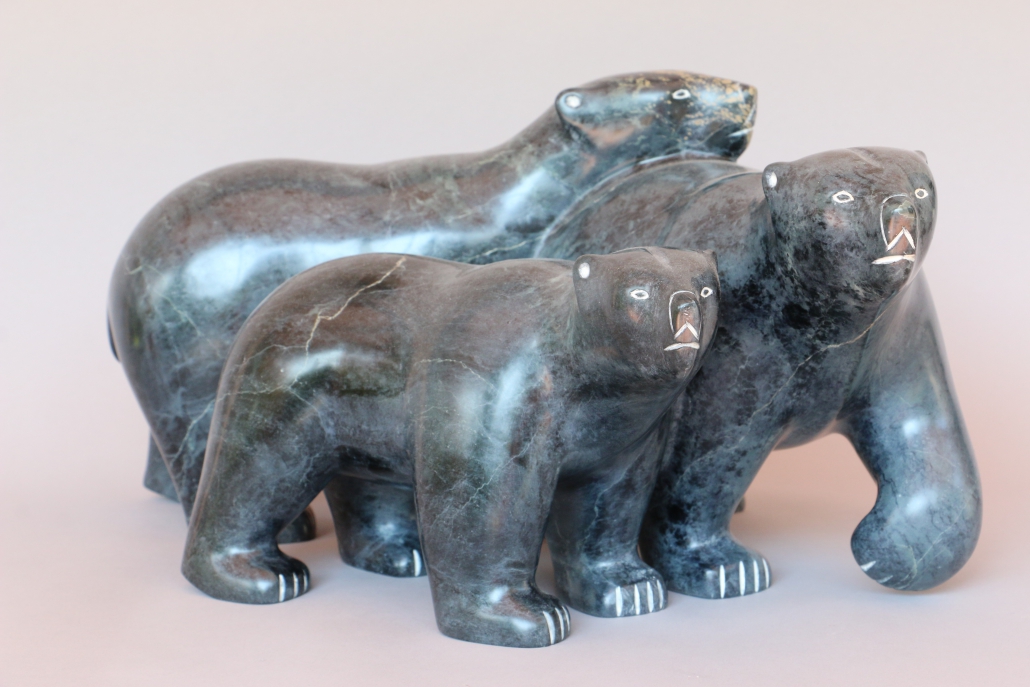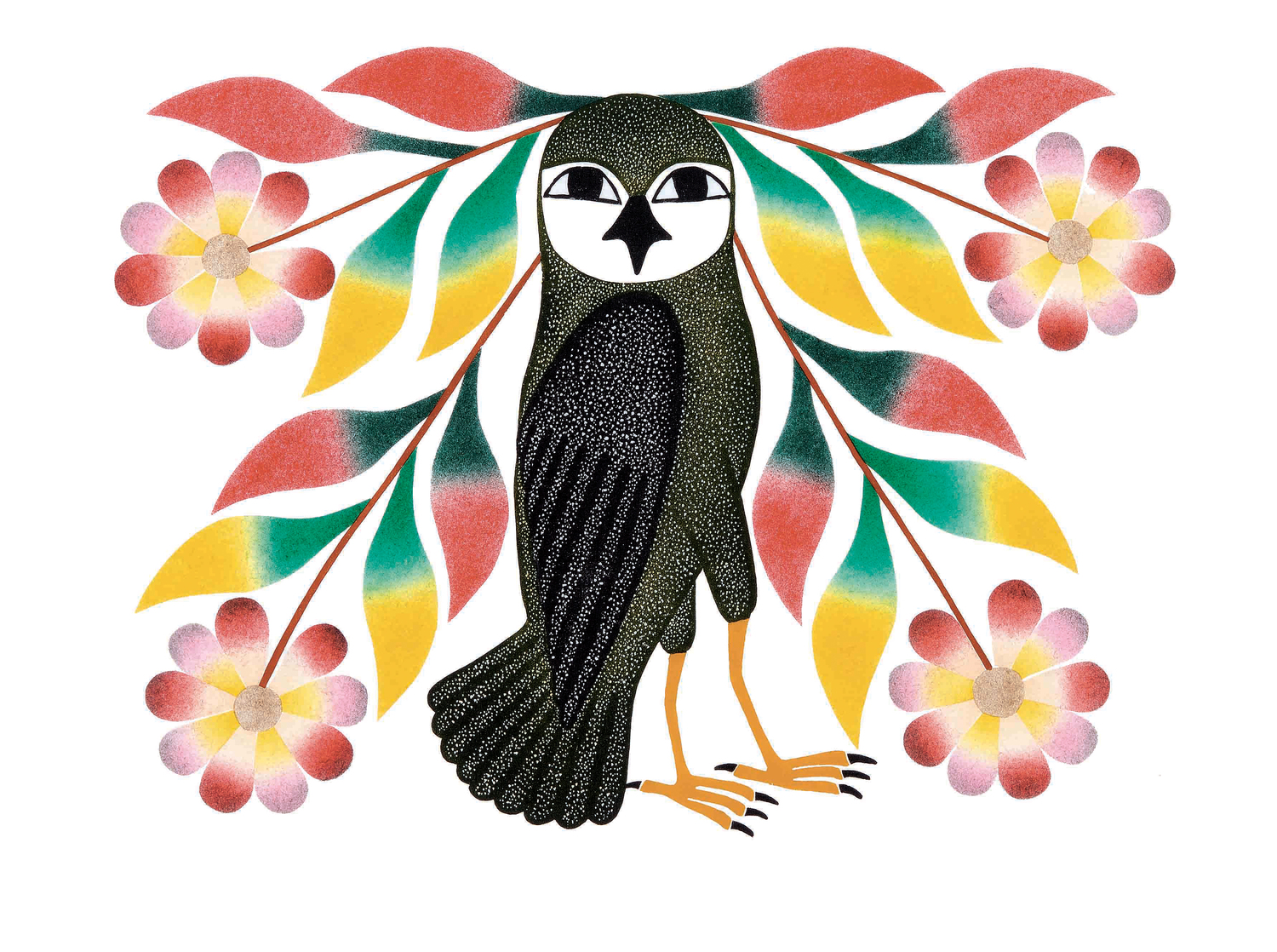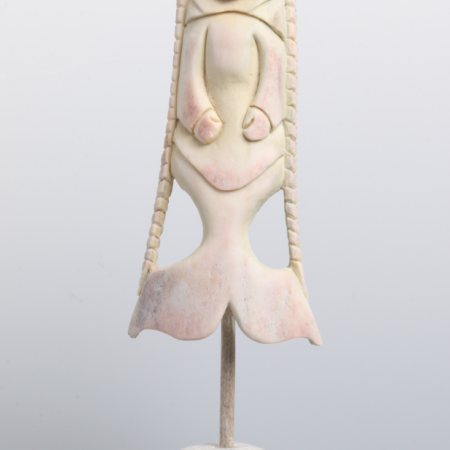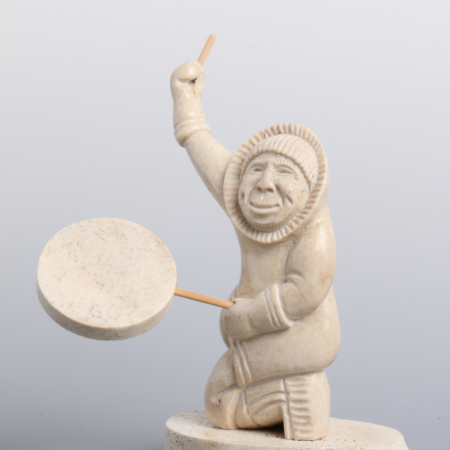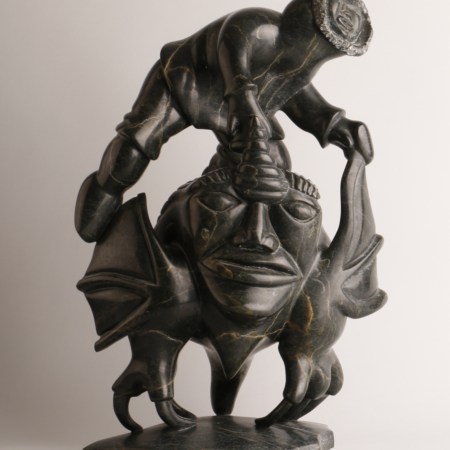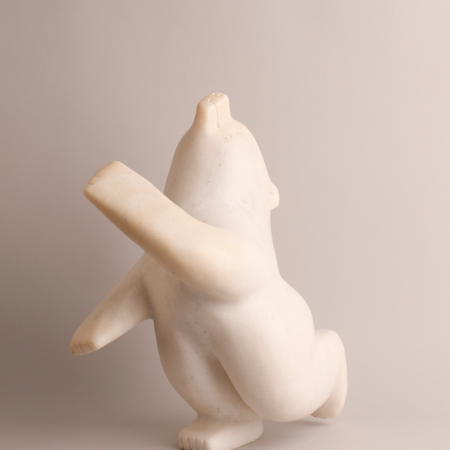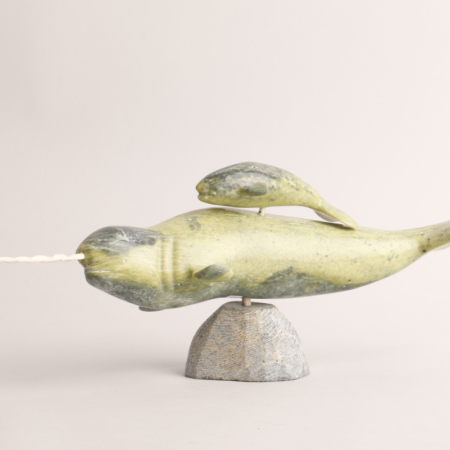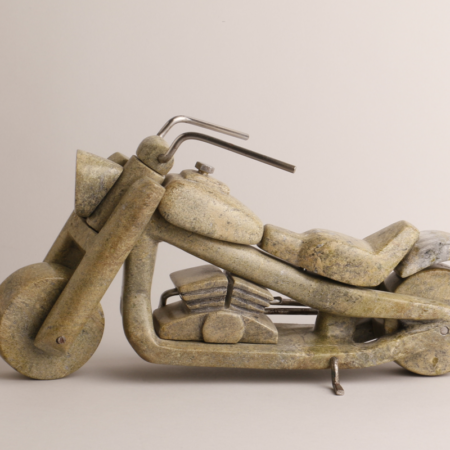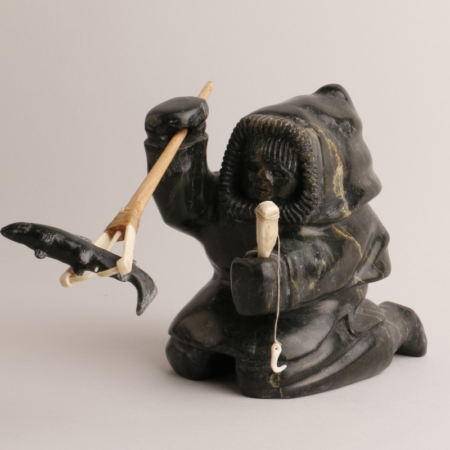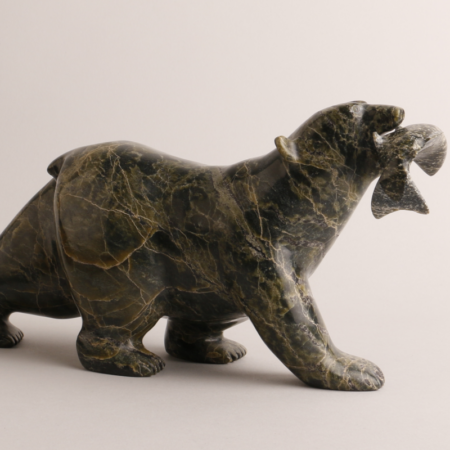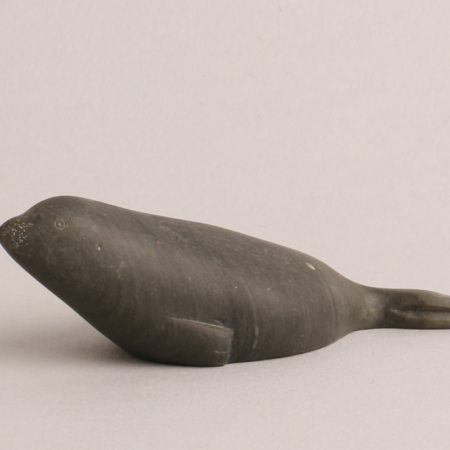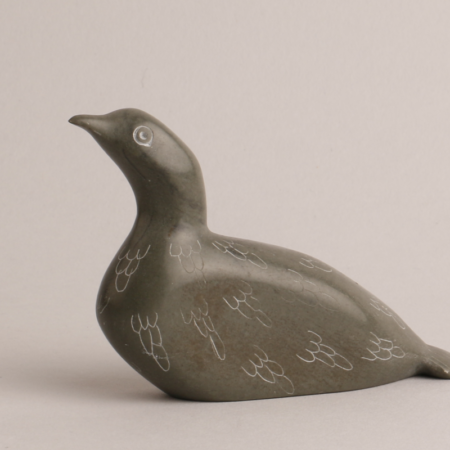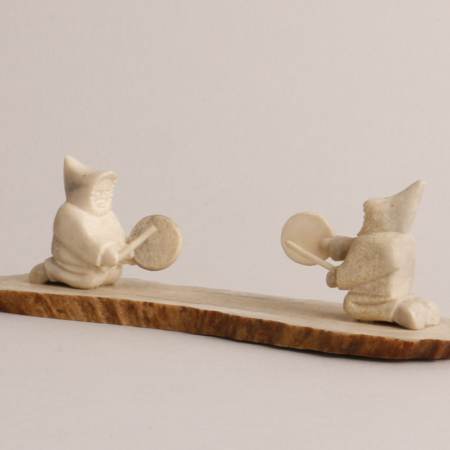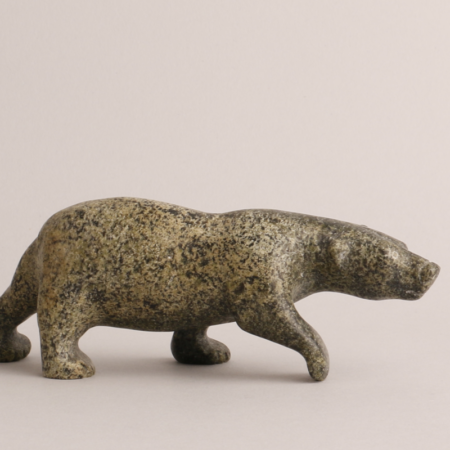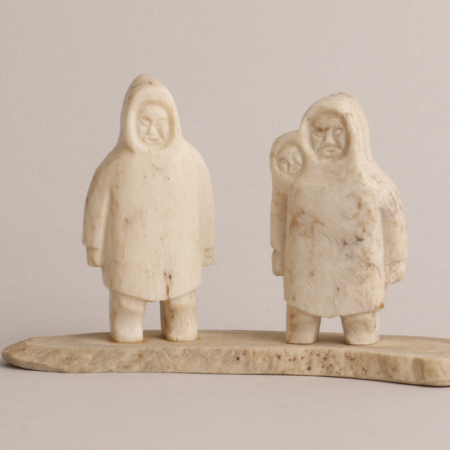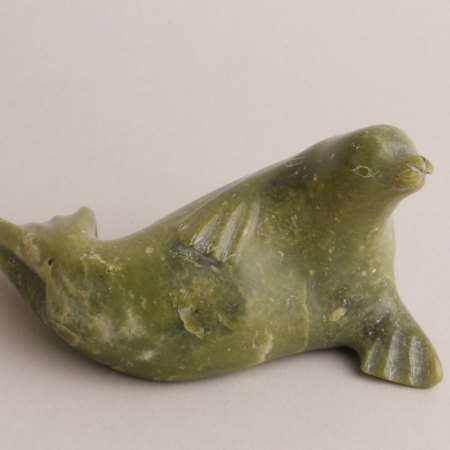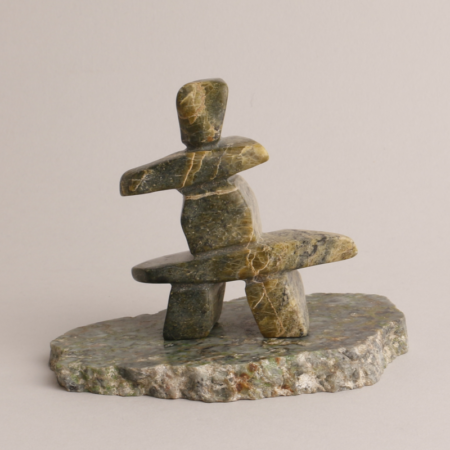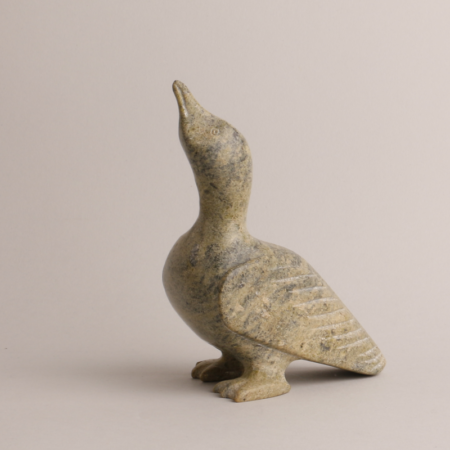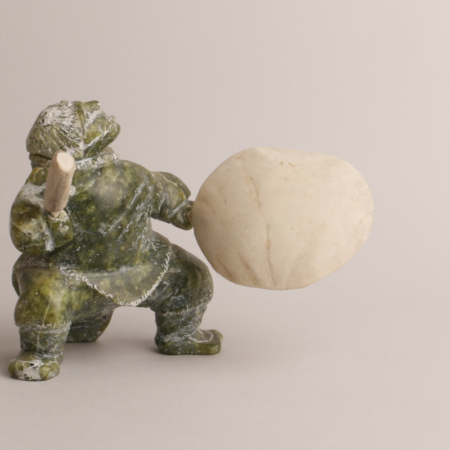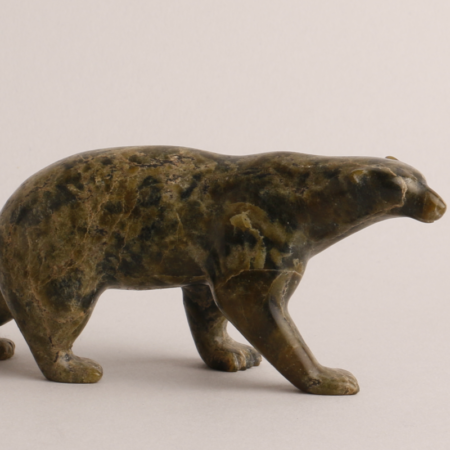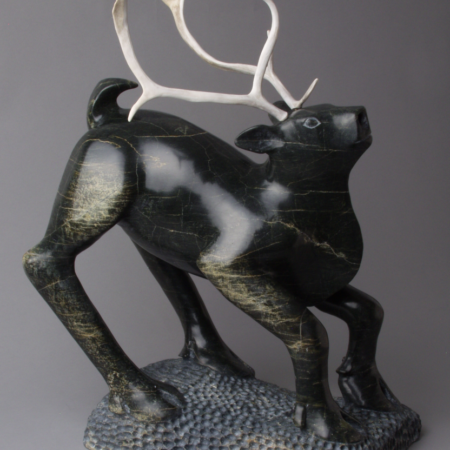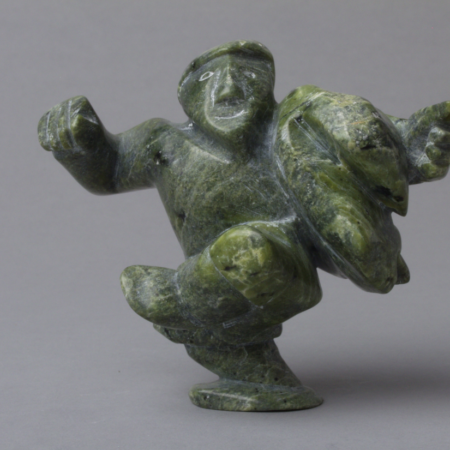“Inuit sculptures from Canada have grown out of a culture that only very recently has come into direct contact with modern civilization. It was as late as the 1950s that Canada’s Inuit discontinued their nomadic lifestyle and settled in permanent communities across the Arctic.
It is in these tiny settlements of 1’000 inhabitants or less that Inuit sculptors create sculptures using local stone, weathered and fossilized whalebone and ivory and antler as their materials. The most widely known medium is soapstone or steatite, but many types of stone are found surrounding the Inuit settlements. Throughout the Arctic they vary in colour and markings from a soft medium grey to black to varous shades of green. Sculptors initially rough out the block of carving stone with axes, hammers , chisels or small power tools. Then they use files, rasps and sandpaper for finishing.
The subject matter reflects the artist’s deep connection to the hauntingly beautiful Arctic land and its landscape, flora and fauna. Over time, regional styles have developed depending on the local stone and on prominent sculptors who have left a lasting influence on their community.”
Indian and Northern Affairs Canada, “Carving from Arctic Canada”, Ottawa 1993.
“Printmaking in the Canadian Arctic started in Cape Dorset in the late 1950s. Working in poorly heated plywood buildings, a small group of interested people experimented with the use of local materials: supplies being brought in by ship once a year, conditions did not allow for elaborate printmaking techniques requiring complicated equipment.
From these early beginnings developed two very basic printmaking techniques: the stonecut and the stencil. Both require a minimum of equipment and technical training and, in Arctic printshops, have remained the most popular techniques to this day. Print collectors are attracted to the stonecut and the stencil because in both techniques every step within the printmaking process is carried out manually, making each impression a multi-original.
In the Canadian North, the role of the artist who does the drawing and that of the printmaker who renders the print are normally quite seperate. Usually the artist does his or her drawing at home, later selling it to the local co-operative that runs the printshop. It may then eventually be chosen by the full-time printmakers working in the printshop as the image for a print.
The degree to which the artist is involved when the print is rendered depends upon the artists willingness to participate in the process. In many cases the artist sees only the final print to sign it.
For these reasons the Inuit printmaker deserves to be considered much more than a skilful technician. His creative input varies – depending on the drawing he works from – but it is often of equal importance to the artist’s in the creation of a print.
There are five Arctic printshops that have been involved consistently in printmaking for many years: Holman on Victoria Island in the Western Arctic, Baker Lake in the Keewatin, Cape Dorset and Pangnirtung on Baffin Island, and Povungnituk in Arctic Quebec. Each of these printshops has developed different approaches in the use of the stonecut and stencil. Thus a study of the two techniques leads one to examine the different community styles in northern printmaking.”

